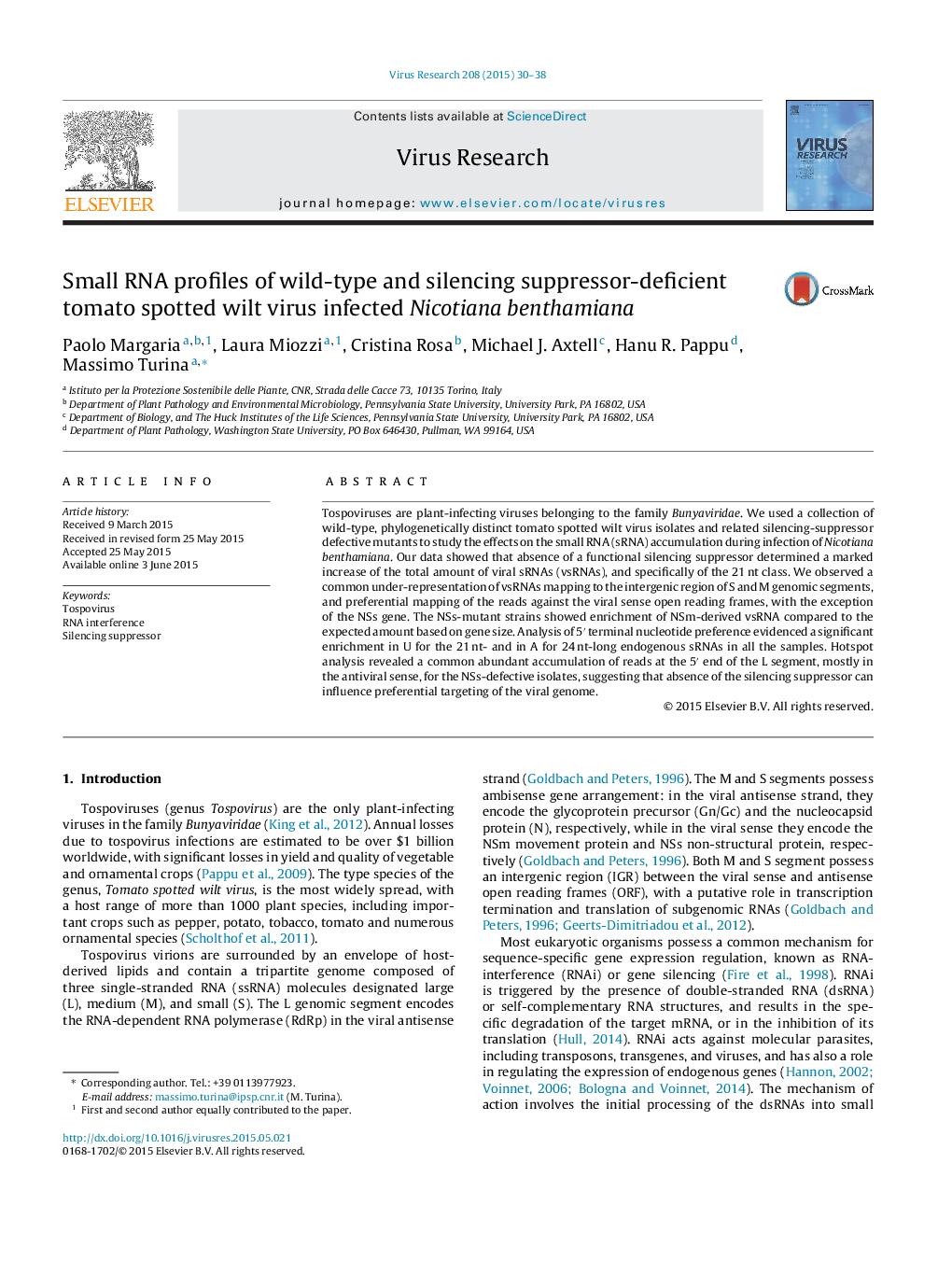| کد مقاله | کد نشریه | سال انتشار | مقاله انگلیسی | نسخه تمام متن |
|---|---|---|---|---|
| 3428111 | 1594349 | 2015 | 9 صفحه PDF | دانلود رایگان |

• No evidence of accumulation of vasiRNAs in TSWV infected N. benthamiana.
• First paper reporting on the sRNA profile of N. benthamiana infected with NSs defective TSWV.
• Lack of silencing suppressor increases the amounts of 21nt vsRNA.
• Lack of silencing suppressor enriches the vsRNA mapping to the NSm ORF.
• Lack of silencing suppressor increases the vsRNA mapping to the carboxy terminal of the RdRP ORF.
Tospoviruses are plant-infecting viruses belonging to the family Bunyaviridae. We used a collection of wild-type, phylogenetically distinct tomato spotted wilt virus isolates and related silencing-suppressor defective mutants to study the effects on the small RNA (sRNA) accumulation during infection of Nicotiana benthamiana. Our data showed that absence of a functional silencing suppressor determined a marked increase of the total amount of viral sRNAs (vsRNAs), and specifically of the 21 nt class. We observed a common under-representation of vsRNAs mapping to the intergenic region of S and M genomic segments, and preferential mapping of the reads against the viral sense open reading frames, with the exception of the NSs gene. The NSs-mutant strains showed enrichment of NSm-derived vsRNA compared to the expected amount based on gene size. Analysis of 5′ terminal nucleotide preference evidenced a significant enrichment in U for the 21 nt- and in A for 24 nt-long endogenous sRNAs in all the samples. Hotspot analysis revealed a common abundant accumulation of reads at the 5′ end of the L segment, mostly in the antiviral sense, for the NSs-defective isolates, suggesting that absence of the silencing suppressor can influence preferential targeting of the viral genome.
Journal: Virus Research - Volume 208, 2 October 2015, Pages 30–38